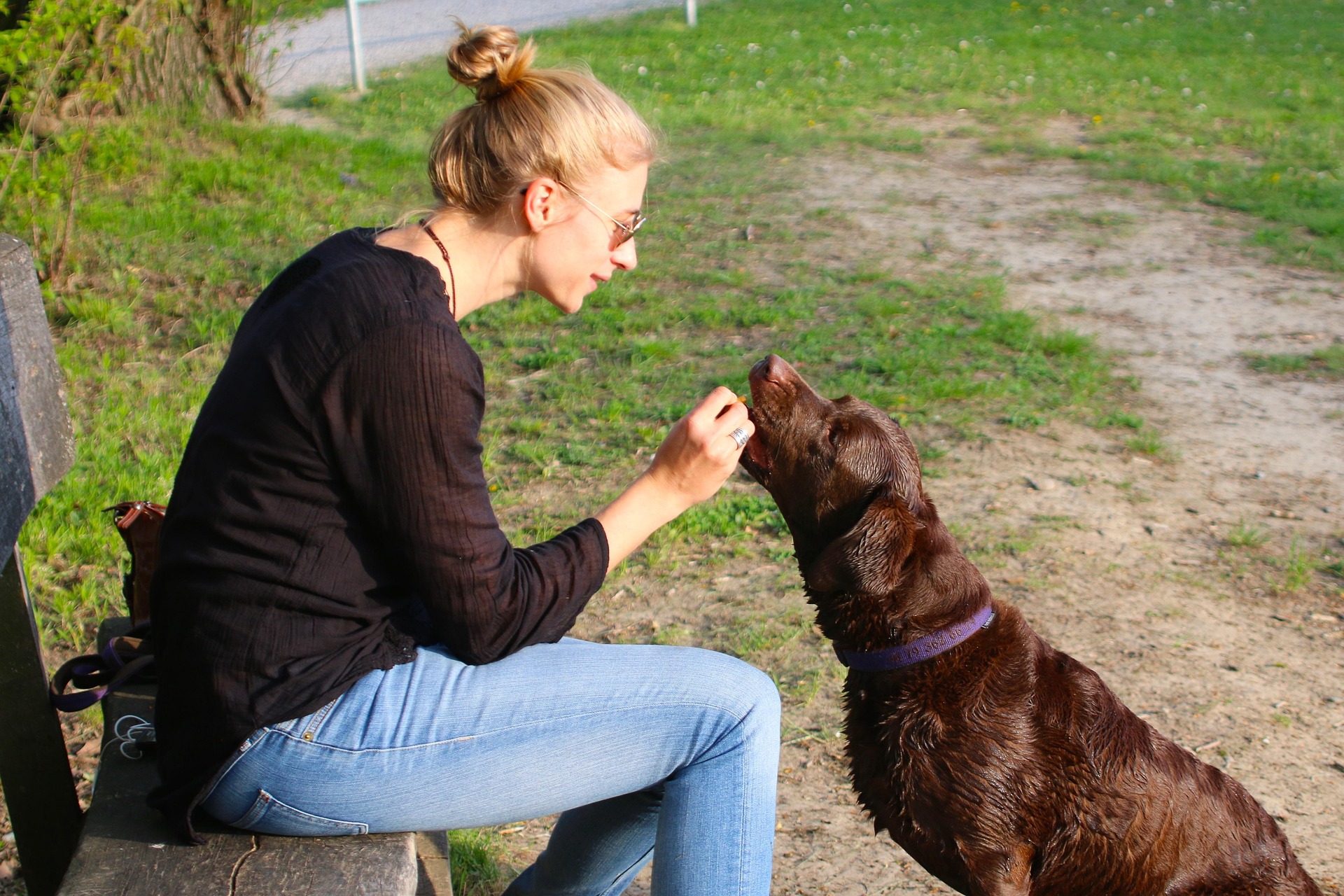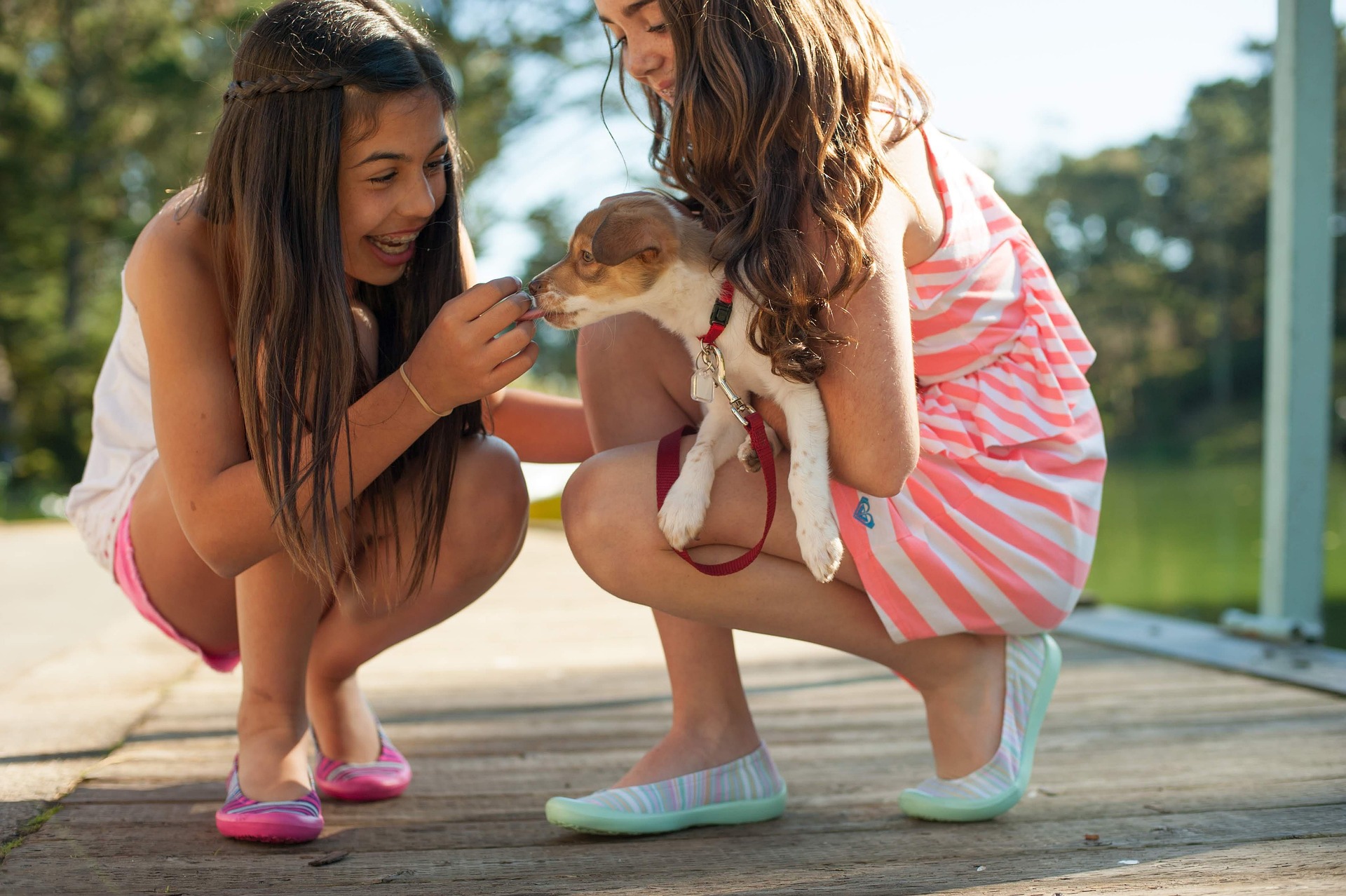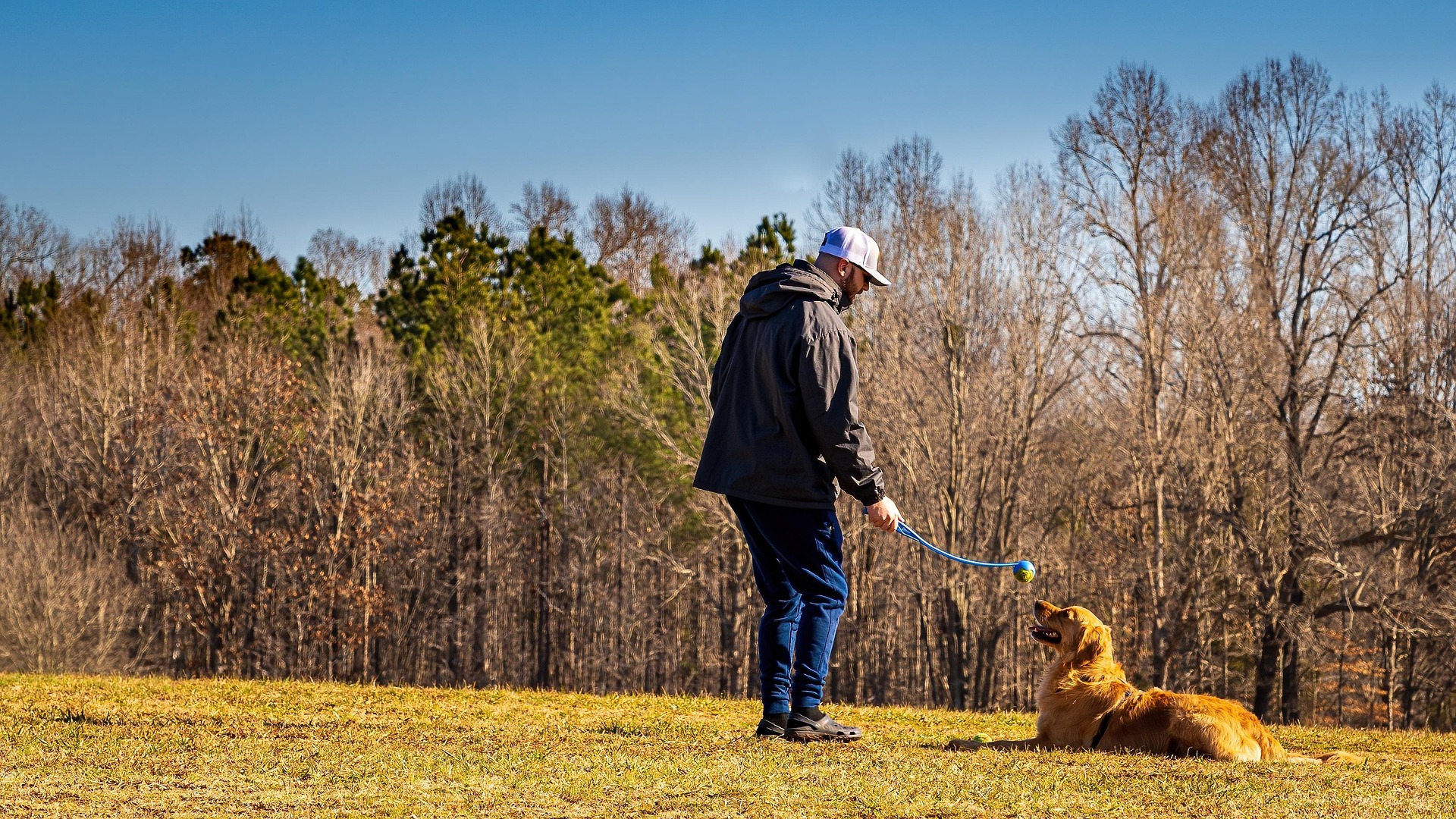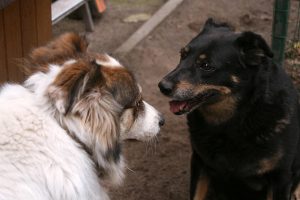There was a time when Milo used to ignore me when I threw him ball. He’d watch it bounce across the yard, look back at me with what I can only describe as polite confusion, then walk away. I felt rejected until I realized something: he didn’t want me to throw things. He wanted me to play with him.
Most of us feed our dogs, walk them, and maybe toss a toy when we’re watching TV. We check the boxes. But there’s a gap between maintaining a dog and actually connecting with one. Interactive playtime isn’t about wearing your dog out or keeping them busy. It’s about building a language between you, a back-and-forth that teaches both of you how to read each other.
Interactive play means you’re both engaged. You’re responding to your dog’s signals. They’re responding to yours. A game of tug where you let them win sometimes, then ask for a drop and reward it. Hide-and-seek where they have to think and problem-solve to find you. Training games that feel like play because your dog is choosing to participate, not just obeying.
This article will show you why this kind of play matters for your relationship, what it actually looks like in practice, and how to start even if your dog seems uninterested or you only have a few minutes a day.
Why interactive play matters more than you think
When you play with your dog, both your brains release oxytocin. That’s the same hormone that bonds parents to children. A 2015 study published in Science found that mutual gazing between dogs and humans triggers oxytocin release in both species, creating a positive feedback loop. Play amplifies this because you’re not just looking at each other. You’re moving together, communicating, responding.
Physical exercise tires a dog’s body. Mental stimulation tires their brain. A 20-minute walk might take the edge off, but a 10-minute problem-solving game can leave your dog genuinely satisfied. Dogs evolved alongside humans as social learners. They watch us, interpret our body language, and adjust their behavior based on what they learn. Play is one of their primary ways of communicating with us.
There’s a difference between passive play and interactive play. Throwing a ball while you check your phone is passive. Your dog runs, retrieves, drops. You throw again. There’s minimal communication happening. Interactive play requires both of you to pay attention. Tug-of-war where you pause, ask for a release, then restart the game. Hide-and-seek where your dog has to use their nose and brain to find you. Training games where you’re teaching a new trick and your dog is actively figuring out what you want.
The distinction matters because dogs don’t just need to move. They need to think. They need to feel like they’re doing something with you, not just near you.
The real benefits of interactive playtime
Builds trust and communication
Play teaches you to read each other. When I play tug with my current dog, Milo, I watch his body language. If his tail drops or he starts panting hard, I slow down. If he play-bows and gets wiggly, I ramp it up. He’s learned that when I say “drop it,” the game doesn’t end. He lets go, I praise him, and we start again. That tiny exchange taught him more about trust than a hundred training sessions could.
Interactive play teaches boundaries and consent. Your dog learns they can say no. If they walk away from a game, you stop. If they bring the toy back, you continue. This matters because dogs who learn their choices are respected become more confident and less reactive.
Compare teaching “drop it” through play versus force. In play, you offer something better when they release the toy. A treat, another round of tug, praise. They learn that letting go gets them something good. Force-based methods (prying open their mouth, yelling) teach them that you’ll take things from them. One builds trust. The other erodes it.
Reduces behavioral problems
A bored dog destroys your couch. An anxious dog barks at everything. A dog with excess mental energy finds outlets you won’t like. I’ve seen dogs stop chewing furniture within days of starting regular interactive play because they finally had something to do with their brains.
Structured play gives anxious dogs a predictable outlet. A game of “find it” where you hide treats around the house creates a routine they can count on. The mental work of searching and problem-solving activates the seeking system in their brain, which releases dopamine. This helps regulate their nervous system better than simply running them tired.
A tired dog is good. A mentally satisfied dog is better. Physical exercise alone doesn’t address the drive to think, solve problems, and interact socially. Ten minutes of scent work or puzzle games can do what an hour of fetch can’t.
Strengthens the bond beyond routine care
Feeding and walking your dog makes you a caretaker. Playing with them makes you a companion. Dogs distinguish between these roles. Research on dog cognition shows that dogs approach play partners differently than they approach people who only provide resources. They initiate more interaction, maintain eye contact longer, and show more affiliative behaviors.
When you play together, you’re sharing joy. Your dog isn’t performing a task or waiting for food. They’re choosing to engage with you because the interaction itself feels good. That emotional connection runs deeper than routine care.
I’ve lived with dogs for almost my entire life. The dogs I merely cared for were happy. The dogs I played with regularly became true partners. They checked in with me more often, trusted my judgment in new situations, and showed genuine excitement when I came home, not just because I fed them but because they associated me with fun and connection.
Improves your dog’s confidence
Shy or fearful dogs benefit enormously from play therapy. Games give them safe ways to practice being bold. A nervous dog who learns to play hide-and-seek starts checking corners and exploring rooms they used to avoid. They’re building courage in a low-stakes environment.
Interactive games build problem-solving skills. When you hide a treat under one of three cups and let your dog figure out which one, they’re learning they can solve puzzles. This transfers to other areas of their life. Dogs who regularly solve small problems during play become more resilient when facing bigger challenges.
Success experiences matter. Every time your dog wins a game of tug, figures out where you’re hiding, or masters a new trick, they experience competence. Over time, this builds a dog who approaches new situations with curiosity instead of fear.
What interactive play actually looks like
Tug-of-war is one of the best interactive games you can play. The old myth that it makes dogs aggressive is false. A 2008 study in Applied Animal Behaviour Science found no link between playing tug and aggressive behavior. What matters is that you set rules: you start the game, you can pause it, and your dog releases when asked. This teaches impulse control while letting them use their natural strength.
Hide-and-seek works indoors and outdoors. Start simple: have someone hold your dog while you hide in an obvious spot, then call them. When they find you, celebrate. Gradually make it harder. This game taps into their natural tracking instincts and gives them a job that feels rewarding. I’ve played this in apartments and backyards. The space doesn’t matter as much as the mental challenge.
Puzzle toys and food games work best when you do them together. Sit with your dog while they work on a puzzle feeder. Encourage them when they get stuck. Hide treats in a rolled-up towel and help them figure out how to unroll it. Your presence and encouragement make it interactive instead of just another enrichment activity they do alone.
Training becomes play when you approach it that way. Teach tricks for fun, not just obedience. Spin, high-five, weaving through your legs. Use a clicker or marker word to show them when they get it right. Basic scent work is surprisingly easy: hide a treat or toy, say “find it,” and let them search. This uses their strongest sense and feels like a game.
Five-minute games work for busy schedules. “Which hand?” where you hide a treat in one closed fist. Three rounds of tug before work. A quick game of find the toy. Short sessions done consistently matter more than occasional long ones.
What not to do: don’t amp your dog up past the point where they can think. If they start jumping on you uncontrollably or can’t respond to cues, the play session has gone too far. Don’t force a dog to play when they’re showing stress signals like whale eye, pulled-back ears, or a tucked tail. Don’t use play as punishment or end it abruptly when your dog makes a mistake. That breaks trust.
How to start (even if your dog “doesn’t play”)
Some dogs don’t play because they never learned how. Others are too anxious, too old, or simply have different preferences. Finding what motivates your specific dog is the first step. Food-motivated dogs love treat-based games. Toy-motivated dogs want tug or fetch. Some dogs only care about sniffing, so scent games win.
Start small with low-energy dogs or seniors. A 9-year-old Labrador doesn’t want to wrestle, but she might enjoy a gentle game of find the treats hidden under blankets on the couch. A dog recovering from surgery might play “touch” where they boop your hand with their nose for a reward. Play adapts to physical limitations.
Create a play routine that fits your schedule. Five minutes every morning before work. Ten minutes after dinner. Weekend afternoons for longer sessions. Dogs thrive on predictable routines. When play happens at consistent times, they start anticipating it, which builds excitement and engagement.
Read when your dog is done. If they walk away, respect it. If they lie down mid-game or start sniffing the ground instead of engaging, the session is over. Pushing past their signals teaches them that you don’t listen, which damages the trust you’re trying to build.
Adapt play for different ages and abilities. Puppies need short sessions with lots of breaks because they tire quickly and need to process what they’re learning. Adult dogs can handle longer, more complex games. Senior dogs benefit from gentle, mentally stimulating games that don’t stress their joints. A blind or deaf dog can still play, you just modify the game to use their other senses.
Common mistakes dog parents make
Playing only when convenient breaks the routine your dog needs. If play only happens when you feel like it, your dog never knows what to expect. Consistency matters more than duration.
Making it about exercise goals misses the point. If you’re focused on tiring your dog out so they’ll be quiet, you’re not connecting. You’re managing them. Interactive play should feel good for both of you, not like another chore.
Punishing during play destroys trust instantly. If your dog gets too excited and accidentally bites your hand during tug, yelping and ending the game teaches them to be more careful. Yelling at them or forcing them into a timeout teaches them that play with you is risky.
Comparing your dog to others sets you both up for frustration. Your neighbor’s dog might play fetch for hours. Yours might prefer puzzle games. A dog who doesn’t wrestle isn’t broken. They just have different preferences.
Forgetting that play looks different for every dog is the biggest mistake. A herding breed might love chase games. A scent hound might only care about tracking games. A lap dog might play by wiggling a toy between their paws while lying on your lap. All of it counts as play if your dog is engaged and enjoying it.
Final Thoughts
Milo eventually taught me what he wanted. He didn’t want to play fetch while I was busy with something else. The shift from “I should play with my dog” to “I want to play with my dog” happens when you stop treating it like exercise or enrichment and start treating it like connection. Play becomes something you look forward to, not something you schedule because a trainer told you to.
Start today with one game. Hide a treat in the house and help your dog find it. See what happens.
The bond you want with your dog isn’t built in big training milestones or expensive toys. It’s built in small daily choices, and one of the best choices you can make is to play.











